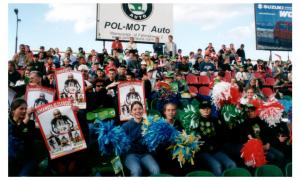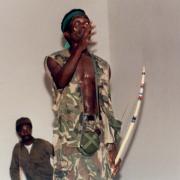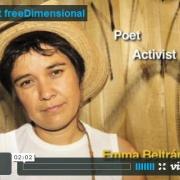Cultural Resistance: The Power of Music and Visual Art as Protest
Summary Available:
Protest art has been practiced throughout history, especially serving the anti-war movement in the mid-20th century. Today, art has become a powerful and international language to speak against all forms of human rights violations, along with other activism. For example, during the Arab Spring, the arts were used to make anti-authoritarian statements. The photographer and graphic designer, Nermine Hammam, captures the fundamental frailty of rule by force in the global community in her exhibition Cairo Year One by combining the realities of the conflict with a surreal and idealistic background. Tunisian folk-rock singer Emel Mathlouthi and rapper El General used music to rail against the state brutality and the suffering of Egypt’s youth and working class, which attracted considerable attention from protestors and transformed into a powerful protest song. The protest art of the Arab Spring has since joined a broader dialogue between protest art of the past and present, in mediums as diverse as books, film, performance art, and multimedia.


 Nigdy Wiêcej (Never Again) uses a number of tactics to carry out its work in Poland. Two of the tactics explained in this case study are the use of cultural resources in the community to recruit activists and the organization of activists into an information-gathering network.
Nigdy Wiêcej (Never Again) uses a number of tactics to carry out its work in Poland. Two of the tactics explained in this case study are the use of cultural resources in the community to recruit activists and the organization of activists into an information-gathering network. Oulimata Gaye and her organization Réseau Africain pour le Développement Intégré (RADI) break the wall of silence that cloaks violence against women in Senegal. How do we begin to “repair” human rights problems when people will not speak of them? How do we make people talk about them? The tool used here is theater. At times amusing, at times sad, the sketches involve the audience, literally and metaphorically, in familiar situations.
Oulimata Gaye and her organization Réseau Africain pour le Développement Intégré (RADI) break the wall of silence that cloaks violence against women in Senegal. How do we begin to “repair” human rights problems when people will not speak of them? How do we make people talk about them? The tool used here is theater. At times amusing, at times sad, the sketches involve the audience, literally and metaphorically, in familiar situations.  Rebuilding Hope saw the need for an integrated healing process that would allow families and communities to accept child soldiers from Mozambique back into their lives. Acknowledging that traditional healers are often the first people community members approach when they need help, Rebuilding Hope psychologists approached the healers as well as other community leaders to be project partners.
Rebuilding Hope saw the need for an integrated healing process that would allow families and communities to accept child soldiers from Mozambique back into their lives. Acknowledging that traditional healers are often the first people community members approach when they need help, Rebuilding Hope psychologists approached the healers as well as other community leaders to be project partners. freeDimensional (fD) has developed a creative and collaborative process for using surplus resources to provide assistance and safe haven to culture workers in distress. fD’s worldwide network bridges what are often considered two different worlds - art spaces and human rights organizations. fD’s model inspires ideas for bridging other seemingly incompatible groups and networks in order to further their respective missions while maximizing resources available from each.
freeDimensional (fD) has developed a creative and collaborative process for using surplus resources to provide assistance and safe haven to culture workers in distress. fD’s worldwide network bridges what are often considered two different worlds - art spaces and human rights organizations. fD’s model inspires ideas for bridging other seemingly incompatible groups and networks in order to further their respective missions while maximizing resources available from each.